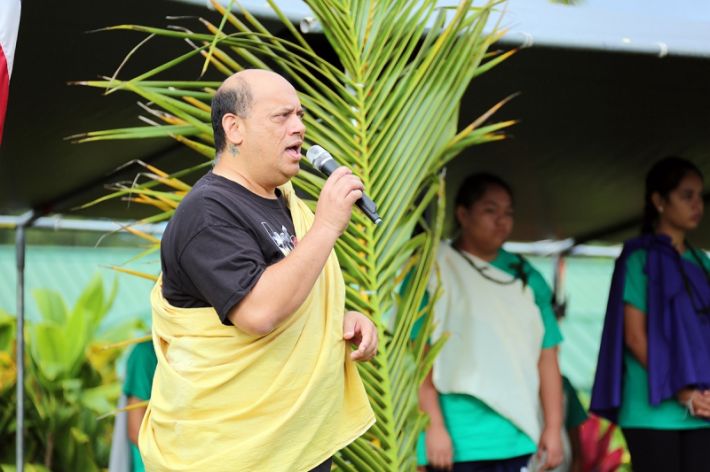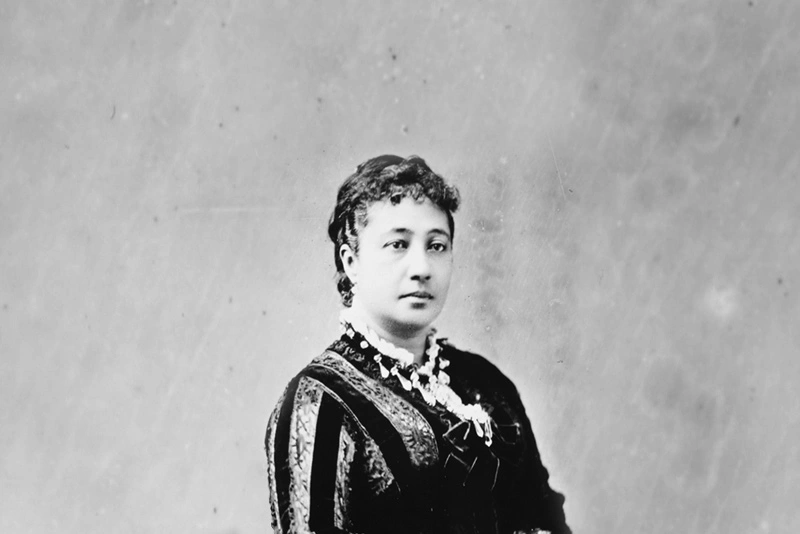Kamehameha Schools is a Native Hawaiian organization that has adopted four Cultural Principles of Hawaiian Identity that serve as a foundation for all we do. One of those principles, Loina Kamehameha – Shared Customs and Practices, demonstrates a commitment to fostering environments that value relationships (spiritual, human and with the natural environment) and unite us in our traditions, practices, and behaviors while respecting diversity of cultural expression.
Students, kumu and staff of Kamehameha Schools Hawai‘i campus celebrated the start of the makahiki season with 'Aha Makahiki, an annual campus tradition. The event is an opportunity for students to build a strong Hawaiian cultural foundation through the perpetuation and demonstration of cultural practices and principles.
Makahiki–the beginning of the Hawaiian new year– celebrates the harvest season, and traditionally lasts about three months, beginning in November and lasting through late January or February. It is a period set aside to honor Lono, a Hawaiian deity associated with fertility, agriculture, rainfall. It is a time set aside for tribute, harvest, sport and play.
“One of the things we really want to push forward is our students understanding their existence, their self-value and their ancestral intelligence,” said Dr. Lehua Veincent, KS Hawaiʻi kula kiʻekiʻe poʻo kumu (high school principal). “Understanding that the connection of our past to our present to our future is all in sync with each other.”
“Knowing that for us to move forward we have to be able to make sure that our students understand that our past dictates our future. Our ʻAha Makahiki is about allowing our students to really step-up, being the ʻōiwi leaders that they are.”
‘Aha Makahiki begins with a Ka Wehena, or opening protocol, in which oli and hula are performed and ho‘okupu (offerings) are presented in tribute to Lono. Students rehearse during scheduled periods for weeks leading up to the event.
Then, students participate in a series of Nohona Hawai‘i (Hawaiian cultural) workshops. The sessions are led, organized and developed by members of the senior class. Workshops cover a wide range of topics, many geared towards preparing traditional foods or making Hawaiian crafts. Seniors are responsible for designing the curriculum for their lesson, identifying and securing the resources needed and even promoting their workshops. Underclassmen can select from the many different options, and even if they'd prefer 40-, 80- or 120-minute sessions. To see a list of courses that were offered, visit the ahamakahiki.com page.
“My favorite part of ʻAha Makahiki is that it’s an all-school event,” shared Kamalanai Kekuewa, KS Hawaiʻi senior. “It used to just be a ninth grade level event, but once Kumu Lehua came on board, he really felt that makahiki should be an all-school event. That’s why we now have all grade levels participating in makahiki.”
“It’s just really great to see every grade level come into their hula, so that by the time that you’re a senior they do all four hulas. It’s just a really great day where you can celebrate your culture.”
After the workshops, students compete individually in makahiki games like ʻUlu Maika/Moa Pāheʻe (stone bowling / club sliding), pā ‘ume‘ume (one-man tug-o-war), uma (prone wrist wrestling) and Pohaku Hoʻoikaika - stone throwing. Then classes compete with each other in a game of hukihuki (tug-o-war).
A new part of the 'Aha Makahiki introduced last year and continued this year was the Nā Paio o Nā Ali‘i challenge, in which students who choose to participate, take part in a mud-run type of course, with challenges based on the struggle of their ancestors in their time of war. The event offers a fun and competitive outlet influenced through a cultural lens of Hawaiian history.
This year’s gathering was special with the campus hosting guest from Samuel Raapoto high school in Tahiti. At lunch, the group performed for students and staff, continuing the cultural exchange they had engaged in throughout the week prior.
See more photos from this year’s event in the photo gallery link below or on the KS Hawaiʻi Facebook page.
STRATEGIC PLAN 2020
SP2020 is a five-year strategic plan that will guide Kamehameha Schools from 2015 to 2020. The plan marks a starting point toward KS’ Vision 2040, which envisions success for all Native Hawaiian learners.
This story on ʻAha Makahiki addresses both Goal 1 and Goal 3 of SP2020 which calls for KS to deliver world-class, culture-based education and cultivate a Native Hawaiian identity within its learners.

Dr. Lehua Veincent opens the morning ceremony with oli and welcome to special guests, setting the foundation for why KS Hawaiʻi does this and what to expect throughout the day.

KS Hawaiʻi senior Kamalanai Kekuewa, who was one of the emcees of the event, explains her favorite part of ʻAha Makahiki.

Following the opening ceremony, seniors led a series of Nohona Hawaiʻi workshops for underclassmen.

This year's festivities also welcomed special guests from Samuel Raapoto high school in Tahiti, who performed during lunch.
Related articles
Related photo galleries
TAGS
ks hawaii,special event,keaau campus, 'aha makahiki,native hawaiian identity,hawaiian culture,imua kamehameha,loina kamehameha,16-17action1,16-17action5,goal 1,goal 3,hawnculture
CATEGORIES
Kaipuolono Article, Themes, Culture, Hawaii Newsroom, KS Hawaii Home, Hawaii High School, Newsroom, Campus Programs, Hawaii
Print with photos
Print text only










